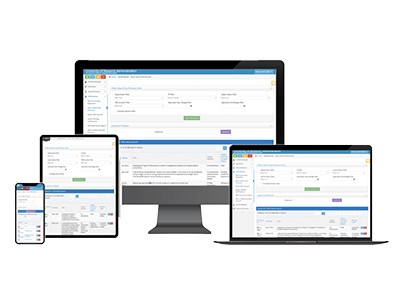NSF has published the new program solicitation for AGEP.
Revision Notes: The Transformation Alliance track was discontinued. Three new tracks have been offered: The AGEP Catalyst Alliance (ACA) track, the AGEP Faculty Career Pathways Alliance Model (FC-PAM) track, and the AGEP Institutional Transformation Alliance (ITA) track. The FC-PAM track will only be funded in FY2022-FY2023 and it will be discontinued thereafter.
NSF is particularly interested in activities that will advance science, technology, engineering and mathematics (STEM) and STEM education research disciplines contributing to the fields of artificial intelligence and quantum information systems. As well, fields that focus on preparing America’s skilled technical workforce and advancing discoveries that empower U.S. businesses and entrepreneurs to succeed globally are of special interest.
Synopsis of Program:
The NSF's Alliances for Graduate Education and the Professoriate (AGEP) program contributes to the National Science Foundation's objective to foster the growth of a more capable and diverse research workforce. Through this solicitation, the NSF seeks to build on prior AGEP work, and other research and literature concerning racial and ethnic equity, in order to address the AGEP program goal to increase the number of historically underrepresented minority faculty in STEM. Furthering the AGEP goal requires advancing knowledge about new academic STEM career pathway models, and about evidence-based systemic or institutional change initiatives to promote equity and the professional advancement of the AGEP populations who are pursuing, entering and continuing in non-tenure and tenure-track STEM faculty positions. The use of the term "historically underrepresented minority" reflects language from Congress, and in the context of the AGEP program, the AGEP populations are defined as STEM doctoral candidates, postdoctoral scholars and faculty, who are African Americans, Hispanic Americans, American Indians, Alaska Natives, Native Hawaiians, and Native Pacific Islanders. The terms for these racial and ethnic populations are derived from the US government's guidance for federal statistics and administrative reporting. At the graduate student level, only doctoral candidates are included because they have greater potential to enter a faculty position within the project duration time frame.
Systemic and organizational inequities may exist in areas such as policy and practice as well as in institutional, departmental, laboratory and classroom culture and climate. AGEP proposals may address, for example, practices in academic departments that result in the inequitable allocation of service or teaching assignments which may impede research productivity, delay career advancement, and create a culture of differential treatment and rewards. Similarly, policies and procedures that fail to mitigate implicit bias in hiring, tenure, and promotion decisions could lead to people who are members of AGEP populations being evaluated less favorably, perpetuating historical under-participation in STEM academic careers and contributing to an academic climate that is not inclusive.
All AGEP Alliances are expected to engage similar institutions of higher education (IHE) to work collaboratively and use intersectional approaches in the design, implementation, and evaluation of systemic change strategies. The collaborating IHEs must be similar to each other based on such variables as Carnegie classification, geographic location and student and/or faculty demographic characteristics.
This solicitation includes three funding tracks that all support the AGEP program goal. All tracks require collaborative IHE teams to use an intersectional lens as they address systemic and institutional change strategies at IHEs to promote equity for AGEP populations.
- The AGEP Institutional Transformation Alliance (ITA) track is designed to support the development, implementation, and evaluation of innovative systemic and institutional change strategies that promote equity for AGEP populations, within similar IHEs. ITAs will create permanent policy and practice changes that advance AGEP populations, and the project work is expected to be sustained after NSF funding expires. Please note that a preliminary proposal to the ITA track is required, and that at least one of the institutions submitting must first have or have had an AGEP Catalyst Alliance. The proposing IHEs represented in the preliminary ITA proposal must be the same collaborating IHEs who will plan to submit a full ITA proposal, if invited by NSF to submit the full ITA. Please read the full solicitation for details about ITA Preliminary and Full proposal submissions that begin in FY2022.
- The AGEP Faculty Career Pathways Alliance Model (FC-PAM) track is intended to support the development, implementation, evaluation, and institutionalization of Alliance models that will advance AGEP populations, within similar IHEs. The FC-PAM collaborators must also self-study into how socio-cultural, economic, structural, leadership and institutional variables affect the formation of the FC-PAM Alliance, and the strategies or interventions the collaborators implement to advance the AGEP populations. A Letter of Intent (LOI) is required ONLY for IHEs that plan to submit an FC-PAM collaborative proposal, and only one LOI is needed for the collaborating research institutions that plan to submit the FC-PAM proposal. The FC-PAM track will only be available in FY2021-FY2022 and it will be discontinued thereafter.
- The AGEP Catalyst Alliance (ACA) track supports the design and implementation of one or more organizational self-assessment(s) to collect and analyze data that will identify inequities affecting the AGEP populations; pilot equity strategies as appropriate; and develop a five-year equity strategic plan for the AGEP populations. The ACA is meant as a facilitator grant to help similar IHEs generate the foundational work necessary to initiate an ITA project.




